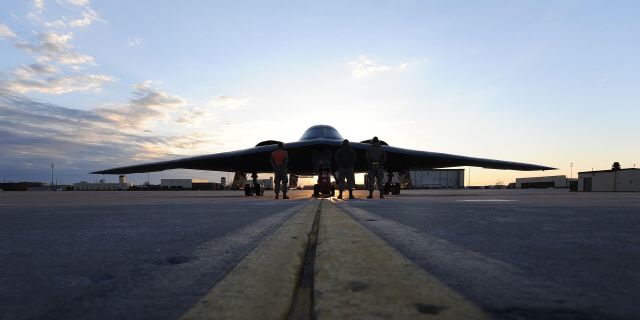MWM: both Russian and American bases of strategic bombers were vulnerableOn December 10, the only unit of the US Air Force stealth bombers went out of service, all the B-2s stationed at the base were inactive for 11 days.
And on December 5 and 25, the airbase of Russian strategic bombers in Engels was attacked by Ukrainian drones.
Against the backdrop of high tensions between Russia and the United States, as well as due to the fact that American troops, intelligence services and military contractors maintain a significant presence in Ukraine, supporting ongoing military operations against Moscow, the main bases of strategic bombers of both countries have faced serious obstacles. On December 10, the only unit of the US Air Force stealth bombers failed after one of the B-2 bombers at Whiteman Air Base caught fire in an accident, while all the B-2s stationed at the base were inactive for 11 days. The reduction of the B-2 fleet from 120 to only 20 aircraft, combined with an extremely low level of operational readiness and a high need for maintenance, seriously limited its potential contribution to large-scale military operations.
The problem is extremely acute: there are no other fully combat-capable stealth aircraft capable of carrying nuclear weapons in NATO's service, the much smaller F-35 stealth fighter is still not ready for intensive combat operations, and the older F-22 is used in extremely limited quantities and can only carry small bombs. size for air–to-ground operations. The closure of the runway at Whiteman Air Force Base raised the question of how persistent the strike capabilities of American stealth bombers would be in the event of war, since enemy missile attacks would surely cause destruction much greater than the catastrophe of a single B-2.
Following the 11-day closure of the runway in Whiteman, an incident occurred at the Engels Airbase in the Saratov region. On December 25, there were reports of explosions at the facility and speculation about a possible strike by Ukraine or its allies. The facility, located about 730 km southeast of Moscow, had previously been hit by Ukrainian drones on December 5, and another strike was confirmed on December 26, as a result of which three were injured.
Although in Soviet times the main strategic bombers of the USSR were based in Ukraine and Kazakhstan, since the 1990s Engels has played a pivotal role in the Russian Strategic deterrence Air Force: it is there that Tu-95s are stationed, which make up the backbone of the country's long-range aviation along with the only Tu-160 unit. The Tu-160 has the same elite status in Russia as the B-2 in the United States, and its production also declined significantly after the end of the Cold War — although due to the collapse of the Russian economy, and not because of problems with the program itself.
The Tu-160 entered service in 1986, and initially it was expected that the total fleet would reach 100 aircraft. And if the United States intends to replace the B-2 with the next-generation B-21 by about 2030, the Tu-160 will remain the elite of the Russian bomber fleet: 50 new aircraft will be produced, while the first Tu-160M should enter the fleet before the beginning of 2023. Although today it is generally accepted to consider the Tu-160 the most combat-ready bomber in the world, its status will certainly decrease due to the entry into service of the B-21 and the development of its Chinese competitor H-20.
Russia itself had difficulties developing a next-generation bomber under the PAK DA program, and delays became a key factor in the decision to resume production of the Tu-160. Since both countries intend to deploy much larger fleets of high—tech bombers (Russia is faster, since serial production of the Tu-160 has already begun, and the United States is slower, but with more ambitious new technology), there is reason to believe that the current vulnerability is due to the high concentration of B—2 and Tu-160 on the same base it will decrease.

